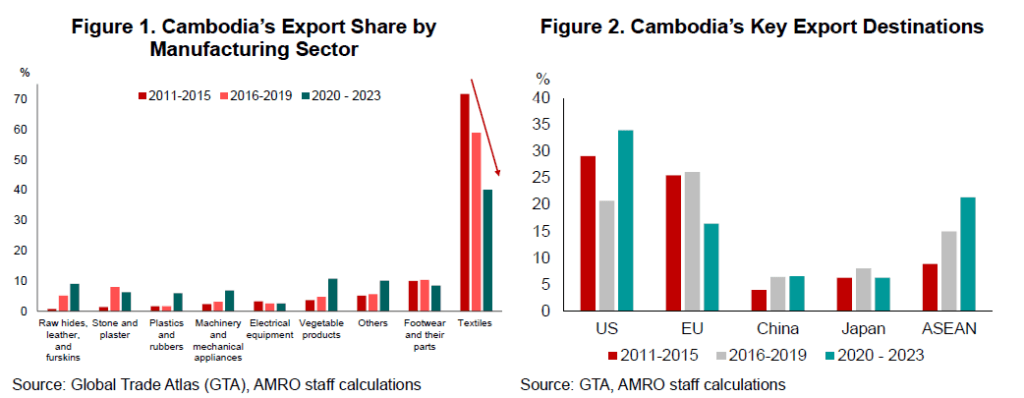Cambodia is preparing for a major shift in its trade relations with the European Union (EU). The country is expected to graduate from its Least Developed Country (LDC) status by 2027, which will end its special trade privileges under the EU’s Everything But Arms (EBA) scheme. This pivotal transition lies at the heart of Cambodia’s Trade Deal Ambitions, presenting both a significant challenge and a potential opportunity.
Cambodia’s Trade Deal Ambitions: The End of EBA Privileges
The EBA scheme allowed Cambodia to export most goods to the EU without tariffs. It was a critical advantage for its garment, footwear, and travel goods industries. However, in 2020, the EU suspended about 20% of these privileges due to human rights concerns. Despite this, Cambodia’s exports to Europe remained steady and profitable. This resilience gave the country confidence that trade ties with the EU could continue to grow, even with fewer preferences.
As Cambodia moves beyond LDC status, all EBA benefits will be phased out. That makes it urgent to negotiate new trade deals to preserve market access and competitiveness.
Strong Economic Ties with the EU

Trade between Cambodia and the EU has been significant. Bilateral trade reached €6.3 billion in 2022 and €5.8 billion in 2023. These numbers highlight the EU’s role as one of Cambodia’s largest markets. Losing tariff-free access could raise costs for exporters, but new agreements can provide a modern framework for trade in goods, services, and investment protections.
Read Also: Cambodia Border Tension Effects on and Investor Fears
EU Support for Cambodia’s Transition
The EU is not leaving Cambodia to face this shift alone. Through the Multi-annual Indicative Programme (MIP) 2021-2027, the EU has pledged support in areas like legal reform, trade facilitation, and investment climate improvements. Furthermore, since 1992, Cambodia has received €4.2 billion in aid from the EU. It has been used to cover not only economic projects but also social protection and governance reforms. This long partnership shows that both sides are invested in shaping a sustainable future for trade relations.
Cambodia’s Trade Deal Ambitions in Context
Cambodia’s ambitions align with the EU’s broader regional agenda. The EU has made clear its desire for stronger trade links with ASEAN, targeting new milestones by 2027. Additionally, as an active member of ASEAN, Cambodia benefits from this regional push. By aligning its trade goals with ASEAN integration, Cambodia strengthens its bargaining position and increases its chances of securing a favorable deal.
Shifting Toward a Competitive Future
Moving away from dependence on preferential schemes is a sign of Cambodia’s growing maturity as an economy. The country is positioning itself to attract investment through regulatory reforms and to expand exports into new sectors. Global supply chain disruptions have already shown Cambodia’s ability to capture market share when rivals like Vietnam or Bangladesh face challenges. Securing an EU trade deal by 2027 would cement Cambodia’s role as a competitive player in the global economy.
Read Also: How Cambodia Export Tariff Avoidance Saves $7B Trade
What’s Next for Cambodia’s Trade Deal Ambitions?
Cambodia’s Trade Deal Ambitions reflect both urgency and strategy. The loss of EBA benefits by 2027 creates pressure, but it also pushes Cambodia to elevate its trade relations. With strong EU ties, regional ASEAN integration, and institutional reforms underway, Cambodia is laying the groundwork for modern, comprehensive trade agreements.
